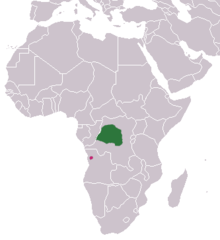
The common kusimanse, also known as the long-nosed kusimanse or simply kusimanse, is a small, diurnal member of the Mungotinae.

Crossarchus is a mongoose genus, commonly referred to as kusimanse, often cusimanse, mangue, or dwarf mongoose. They are placed in the subfamily Mungotinae, which are small, highly social mongooses.

Alexander's kusimanse is a mongoose species native to Central African rainforests up to an elevation of 2,900 m (9,500 ft).

The flat-headed kusimanse is a mongoose species endemic to West African rainforests. It is listed as Least Concern on the IUCN Red List since 2008.

Pousargues's mongoose, also known as the African tropical savannah mongoose, is a mongoose native to Central Africa. It is listed as data deficient on the IUCN Red List as little is known about its distribution and ecology.

The white-browed sparrow-weaver is a predominantly brown, sparrow-sized bird found throughout central and north-central southern Africa. It is found in groups of two to eleven individuals consisting of one breeding pair and other non-reproductive individuals.

The sabota lark is a species of lark in the family Alaudidae. It is found in southern Africa in its natural habitats of dry savannah, moist savannah, and subtropical or tropical dry shrubland.
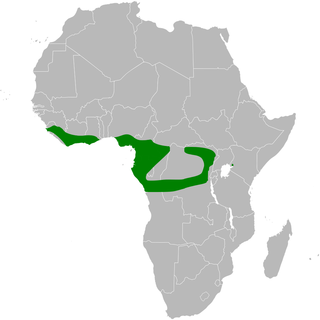
Ansorge's greenbul or Ansorge's bulbul, is a species of the bulbul family of passerine birds. It is found in western and central Africa. Its natural habitat is subtropical or tropical moist lowland forests.

The little grey greenbul is a species of the bulbul family of passerine birds. It is widely distributed across the African tropical rainforest. Its natural habitats are subtropical or tropical moist lowland forests and subtropical or tropical swamps.

The grey penduline tit, also known as the African penduline-tit, is a species of bird in the family Remizidae. It is found in Angola, Botswana, Burundi, Republic of the Congo, Democratic Republic of the Congo, Eswatini, Kenya, Malawi, Mozambique, Namibia, Rwanda, South Africa, Tanzania, Uganda, Zambia, and Zimbabwe. Its natural habitats are subtropical or tropical dry forests, dry savanna, and moist savanna. At 8 to 9 cm in length and a weight of 6.5 g (0.23 oz), it is one of the smallest species of bird found in Africa, along with its cousin the Cape penduline tit and the perhaps smaller mouse-colored penduline tit and the tit hylia.
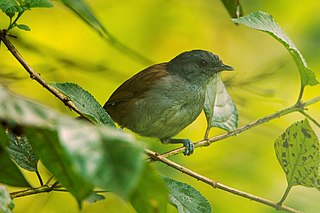
The African hill babbler is a species of bird in the family Sylviidae.

The Angola cave chat is a small passerine bird in the Old World flycatcher family Muscicapidae. It is the sole member of the monotypic genus Xenocopsychus; although it was placed in Cossypha between 2010 and 2022 based on the results of a 2010 molecular phylogenetic study, this placement was found to be an error. It occurs locally from western Angola to marginally south of the Kunene River in northern Namibia. Its natural habitat is rocky places in moist to dry savanna. It was previously described as being Near threatened, but has since been downgraded to Least concerned.

Ansorge's free-tailed bat is a species of bat in the family Molossidae native to sub-Saharan Africa. It is named for W.J. Ansorge, who collected the first formally described specimen.
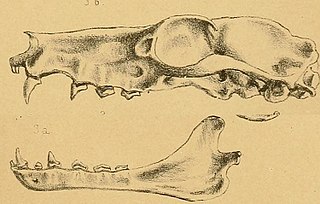
The Angolan epauletted fruit bat is a species of megabat in the family Pteropodidae. It is found in Angola and Namibia. Its natural habitats are dry savanna and moist savanna. It is threatened by habitat loss.
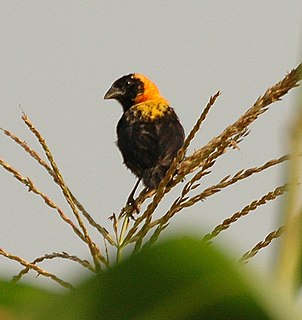
The black bishop is a species of passerine bird in the family Ploceidae native to Africa south of the Sahara. Three subspecies are recognised.

William John Ansorge was a physician who worked in Angola and Uganda and is known for exploring the fauna of the African region. A large number of species have been named after him based on the specimens that he collected and sent back to England.
